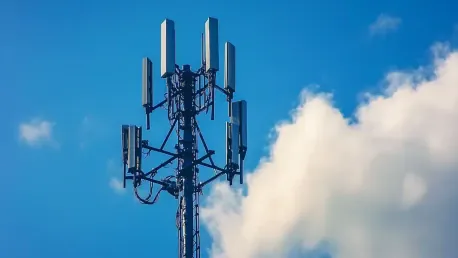The telecommunications industry is on the brink of evolution as Open RAN (Radio Access Networks) holds both promising potential and daunting challenges. Despite its promising prospects, the subdued activities surrounding 5G have left Open RAN in an ambiguous state, with its future hinging on technological advancements and market adoption. The year-on-year decline in the RAN market, primarily due to diminished activities in the US and Japanese 5G markets, along with delays in implementing the O-RAN uplink performance improvement (ULPI) specification, has contributed to the precarious scenario facing Open RAN.
Current State of the RAN Market
Year-on-Year Decline in RAN Market Revenue
Throughout the past year, the Radio Access Networks (RAN) market experienced a notable decline in revenue, with reports from Dell’Oro indicating a 10-20% drop over the first nine months. This decline was further compounded by six consecutive quarters where decline was consistent. This downturn in the RAN market can be attributed to a significant decrease in 5G market activities, notably within the United States and Japan. The lack of consistent 5G deployment projects has left the market struggling to regain its foothold. Ericsson reported signs of stabilization in North America, providing a glimmer of hope amid the turmoil. However, Nokia faces additional obstacles, especially with rumors circulating that T-Mobile US may transition to Ericsson.
Despite these challenges, there are slight indications of recovery within certain market segments. Ericsson’s stabilization in North America hints at a potential recovery, although it might be localized and not indicative of a wider industry trend. Rumors regarding T-Mobile US’s potential switch from Nokia to Ericsson highlight the competitive nature of the market and the need for companies to continuously innovate and adapt to maintain their positions. Such developments are indicative of the industry’s dynamic nature, where any gains or losses can significantly impact companies’ market standings.
The Impact of the O-RAN ULPI Specification
The O-RAN ULPI specification, essential for improving fronthaul performance in Open RAN massive MIMO networks, has seen delays in its full implementation. Operators require the ULPI to leverage the benefits of deploying Open RAN MIMO in high-traffic zones, but its incomplete status has been a stumbling block. Performance improvement in high-traffic areas is a critical factor for network operators, and the full readiness of the ULPI specification is vital for meeting these demands. Ericsson aims to support the ULPI by next year, potentially paving the way for better performance and wider adoption of Open RAN MIMO.
The incomplete status of the ULPI specification has resulted in hesitations among operators regarding investment in Open RAN technologies. Network performance and reliability are paramount, and the lack of a fully ready ULPI has made operators cautious. Ericsson’s plans to support ULPI from next year could mark a turning point, leading to more streamlined implementations and possibly boosting operator confidence. The broader industry sentiment seemed poised for transformation, with the completion of ULPI holding the promise of more efficient and high-performing RAN deployments in the future.
Future Prospects of Open RAN
Analyst Insights and Market Forecasts
Industry analysts, like Stefan Pongratz from Dell’Oro, suggest a cautiously optimistic long-term outlook for Open RAN. Pongratz expects Open RAN to account for a mid-single-digit share of RAN market revenue this year, with a potential increase to 8%-10% by 2025. However, the future remains uncertain until US and Japanese 5G deployment activities increase, or until modernization projects utilizing ULPI interfaces take hold. This forecast underscores both the potential and unpredictability facing Open RAN, with market activities and technological readiness playing crucial roles.
Long-term prospects for Open RAN appear optimistic, but they are heavily dependent on market conditions and technological advancements. The forecasted growth to 8%-10% market share by 2025 shows potential, yet the uncertainty stemming from subdued 5G activities in key regions cannot be overlooked. Enhancement of ULPI interfaces might serve as a catalyst for broader adoption, particularly in high-traffic zones. These projections highlight the critical balance between market adoption and technology readiness.
Market Dynamics and Deployment Trends
The telecommunications industry stands on the verge of significant changes with the introduction of Open RAN (Radio Access Networks). This innovation promises potential advancements and efficiency improvements, but it also faces substantial challenges. Open RAN’s future largely depends on technological progress and how widely it gets adopted in the market. One of the main hurdles in its path is the recent drop in the RAN market, which has been predominantly driven by a slowdown in 5G activities in both the United States and Japan. Further complicating matters are the delays in the implementation of the O-RAN uplink performance improvement (ULPI) specification. This situation places Open RAN in a precarious position, leaving its success uncertain amid evolving market dynamics and the need for continuous technological development. As the industry navigates these obstacles, Open RAN’s fate will be closely watched to see if it can fulfill its potential and lead the next wave of telecommunications innovation.









